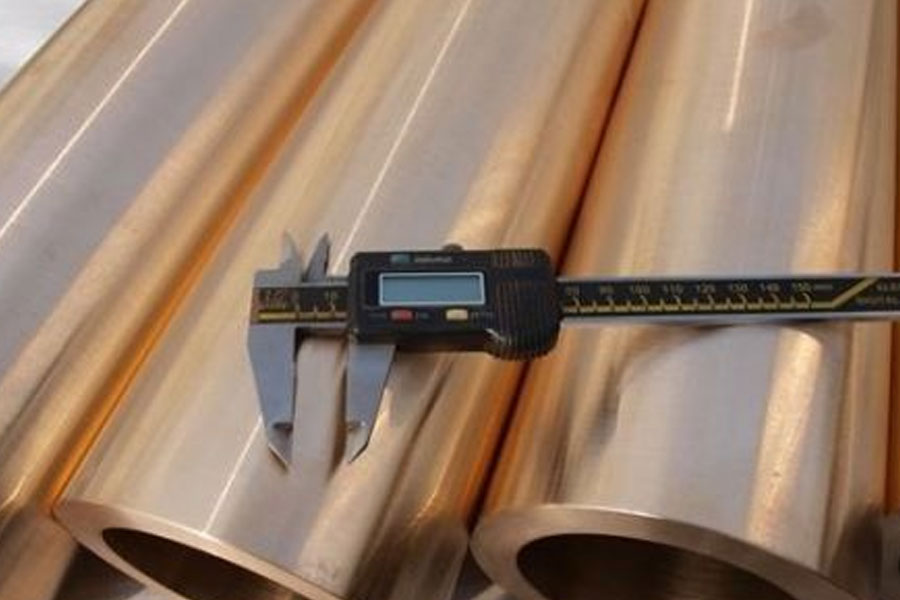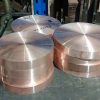
Beryllium copper alloy has a very broad market prospect because of its high strength, high elasticity, corrosion resistance, fatigue resistance, wear resistance, castability, non-flammability, non-magnetic and many other excellent properties, mainly used in machinery, electronics industry. It is predicted that the growth rate of the world beryllium copper market is 10% to 15%, and the market volume of beryllium copper in my country will maintain a steady growth momentum in the next 10 years with the requirements of national economic development.
The chemical activity of beryllium element in beryllium copper alloy is high. Under the condition of high temperature smelting and casting, the alloy is oxidized and inhaled seriously, resulting in low ingot yield and defects such as pores, peeling, inclusion and segregation. Although engineers and technicians have carried out a lot of research and tried a variety of approaches, they have not achieved much.
Rare earth elements have long been widely used in metallurgy (mainly steel, aluminum alloy, zinc alloy, magnesium alloy), petroleum, chemical industry, glass, ceramics, fluorescent materials, agriculture, and medicine because of their excellent properties, but in the beryllium copper industry at home and abroad No related application reports have been found.
The Physical And Chemical Effects Of Rare Earths In Beryllium Copper Alloys
- Grain refinement Rare earth elements Ce, La, Y (except Nd) can significantly refine the grains, thereby improving the mechanical properties of copper. After treatment with different rare earth elements, the grain size of the alloy changed significantly
- Deoxidation Rare earth metals have high chemical activity, and can easily combine with oxygen to form oxides at high temperatures, which significantly improves the anti-oxidation performance. this reason is that after adding rare earth, the activation energy of oxidation increases, resulting in a decrease in the oxidation rate.
- Desulfurization Rare earth interacts with sulfur, G <<0, and has great thermal stability. The addition of rare earth can make the strip-shaped sulfide distributed in a spherical shape and play a denaturing effect, thereby improving the performance. Rare earth sulfides have a high melting point, mostly around 2000 °C. These compounds have a lower density than copper and are precipitated in a solid state before the molten metal solidifies.
- Under the appropriate “structure control” and “morphological control” of sulfide by rare earth, or under the appropriate [RE][S] ratio, the strip-shaped sulfide is distributed in a spherical shape, which can overcome the generation of strip-shaped sulfide. The directionality of the alloy properties, overcome the laminar tearing in the heat affected zone of welding especially thick plate welding, and improve the hot workability of beryllium copper
- Interaction with hydrogen Rare earth not only has a considerable hydrogen storage capacity, but also can form two hydrides (RH 2-х, RH8-х), which can greatly reduce the porosity of the ingot.
- Interaction with low melting point impurities Raw material industrial electrolytic copper often contains impurities such as O, S, Pb, Bi and As, O and S and Cu form (Cu + Cu2O) and (Cu + Cu2S) eutectic, these two co-crystals The crystals are all brittle phases, which are easy to cause “cold brittleness” during Cnc Machining, which affects the berylium machining performance; Pb and Bi and Cu form low-melting compounds (Cu + Pb) and (Cu +Bi), which are distributed along the grain boundary in a net-like manner. Cracking is caused during hot rolling, the so-called “hot brittleness”. Rare earth metals have high activity and are easily combined with O and S to form oxides, sulfides and oxysulfides at high temperatures; they form stable compounds with high melting points with Pb and Bi with low melting points. The density of these compounds is lower than that of copper, so they are easy to float. Exclude and purify.
- Change the morphology of the inclusions and quantitatively analyze copper with different amounts of rare earths. Before adding rare earths, the inclusions are mostly irregular angular Cu2O and Cu2S. When the rare earths increase to 0.05%, some of the inclusions are The inclusions are spheroidized; when increased to 0.32%, the inclusions are all spheroidized, and the rare earth inclusions replace Cu2O and Cu2S, so that the inclusions change from solid solution to the precipitation of rare earth compounds, thereby eliminating or reducing the harmfulness of the inclusions It can improve the yield and electrical conductivity of beryllium copper alloy.
Influence of Rare Earth on Technological Properties of Beryllium Copper Alloy
- Influence on viscosity and fluidity Rare earth can reduce the viscosity of molten metal and increase the fluidity, thereby improving the surface quality of the ingot.
- To prevent segregation in the alloy, due to the large difference in specific gravity of beryllium and copper components, the phenomenon of stratified liquid segregation will occur in the liquid state, resulting in uneven chemical composition of the upper and lower regions, and insufficient stirring, which may form specific gravity segregation. , which makes the upper and lower compositions of beryllium and nickel in ingots different to some extent. Causes differences in mechanical properties, physical properties and corrosion resistance of various parts of the ingot; making processing difficult. Rare earth can effectively prevent segregation, and the effect is better than that of nickel, which can eliminate beryllium segregation.
- Influence on the properties of beryllium-copper alloys The properties of beryllium-copper alloys are improved due to the above-mentioned effects of purification, impurity removal, change of inclusion morphology and grain refinement of rare earths: improving the mechanical properties of the alloy, improving high-temperature plasticity, eliminating or Reduce the difficulties caused by cnc machining, thereby improving the electrical conductivity, thermal conductivity, corrosion resistance, welding and high temperature oxidation resistance of beryllium copper alloy.
Method And Problem Analysis of Rare Earth Addition to Beryllium Copper Alloy
- For the application of rare earth in beryllium copper alloy, Y has the best effect, but the price is high; mixed rare earth is cheaper than single rare earth, so mixed rare earth metal or copper and rare earth intermediate alloy are often used. It is better to use Cu-RE master alloy, the price is not high, and the yield of rare earth is also high.
- The influence of rare earth content on the total area of inclusions
- Analysis of the effect of adding Cu-RE master alloy, Cu-RE master alloy should be added before the furnace is released. The key to the success of the application of rare earths is that the amount of addition should be appropriate, and the amount of retention is appropriate, which is beneficial to the properties of the alloy, while excessive amounts are harmful.






